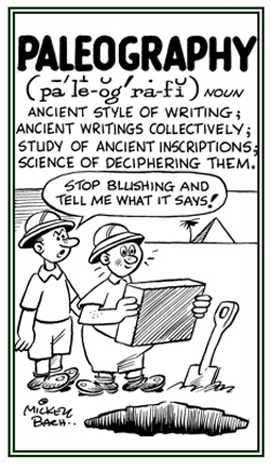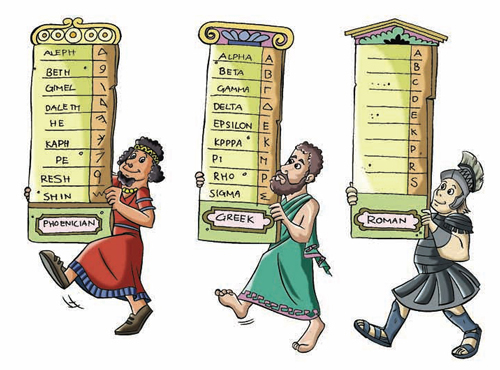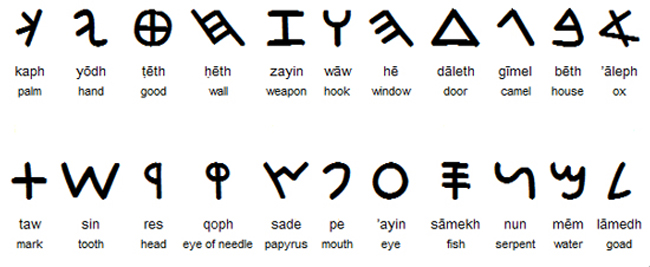grapho-, graph-, -graph, -graphy, -grapher, -graphia
(Greek: to scratch; to write, to record, to draw, to describe; that which is written or described)
As indicated at the bottom of this page, there is a significantly large number of graphic word-entry groups in this unit. Such an extensive listing is provided to show how important the grapho- element is to the English language.
The written descriptions of the distribution of fossil plants and/or animals.
The study of the geographic features of the world in the past: Paleogeography is the physical, and occasionally cultural and political geography of ancient times, or of a particular past geological epoch.
paleograph
An ancient manuscript.
An ancient manuscript or piece of writing: Scholars were trying to interpret the paleography that was discovered in the Roman ruins.

© ALL rights are reserved.
Go to this Word A Day Revisited Index

Go to this Word A Day Revisited Index
so you can see more of Mickey Bach's cartoons.
paleontographic (adjective), more paleontographic, most paleontographic
The description of fossil remains.
paleontography, palaeontography
The description of fossil remains of extinct animals and plants; descriptive paleontology.
The arrangement and appearance of printed letters or ancient printing: The evolution of three paleontypographies or classical languages; including, Phoenician, Greek, and Roman.



The Phoenician alphabet was perhaps the first alphabetic script to be widely-used because the Phoenicians traded around the geographical area of the Mediterranean and beyond while they established cities and colonies in parts of southern Europe and North Africa.
The origins of most alphabetic writing systems can be traced back to the Phoenician alphabet, including Greek, Etruscan, Latin, Arabic and Hebrew; as well as the scripts of India and East Asia.
Significant Features
- Direction of writing is from the right to the left in horizontal lines: aleph to tow; as shown in the chart below.
- The writing system is abjad, a consonant alphabet with no indication of vowels.
- The number of letters is twenty-two; however, there were variations in their forms in different regions and at different times.
- The names of the letters are acrophonic, relating to the use of symbols to represent sounds, and their names and shapes can be traced back to Egyptian Hieroglyphs; for example, the name of the first letter, aleph, means ox which was developed from a picture of an ox's head.
- Some of the letter names were changed by the Phoenicians, including gimel, which meant camel in Phoenician, but was originally a picture of a throwing stick or a giml.
Here are the Phoenician symbols or letters.

Click on this Greek and Related Roman Alphabets page for more information.
The study of the distribution of fossil animal remains: Janet studied paleobiogeography and wanted to specialize in paleozoogeography, which dealt with the dispersion or of animals in past geologic times.
A continuous repetition of the same letters, words, or parts of words when writing: A paligraphia is observed particularly in some medical patients with bulbar palsy (paralysis of muscles of the soft palate, tongue, pharynx, and the larynx), Parkinson's disease (disease of the nerves causing tremors, muscular weakness and stiffness), and presenile (pre-old age) or senile (old age) dementia.
A pathologic or an abnormal medical condition that involves the repetition of letters, words, or parts of words in writing.
pantographic
pantographic (adjective), more pantographic, most pantographic
A reference to an instrument for copying plans, drawings, etc. at any size desired.
papyrograph
papyrographer
A writer on papyrus.
papyrographic
A reference to an instrument for multiplying copies of writings.
Related "writing" word units:
glypto-;
gram-;
scrib-, script-.


